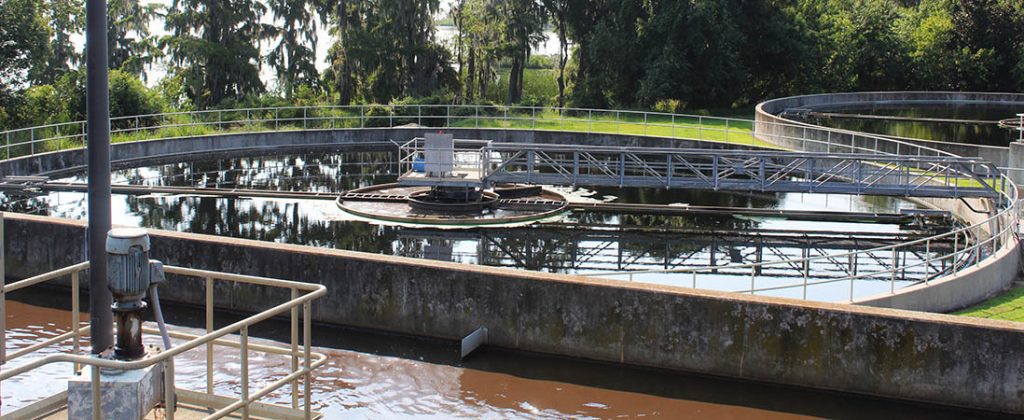
What goes down the drain must come out.
The City of New Bern’s Water Resources team works around the clock to remove solids from the wastewater, treat it and return the water to the environment. People can help by not flushing disposable wipes and other items.
Director of Water Resources Jordan Hughes gave NewBernNow.com a tour of the city’s Wastewater Treatment Plant that’s situated next to the Neuse River in New Bern, NC.
The tour began where the wastewater comes in through a concrete vault that’s about thirty feet underground. Half of the city’s sewer comes from a gravity line and the other half comes in from force mains and dumps into one pump station and then it’s sent up to the plant through three large pumps.
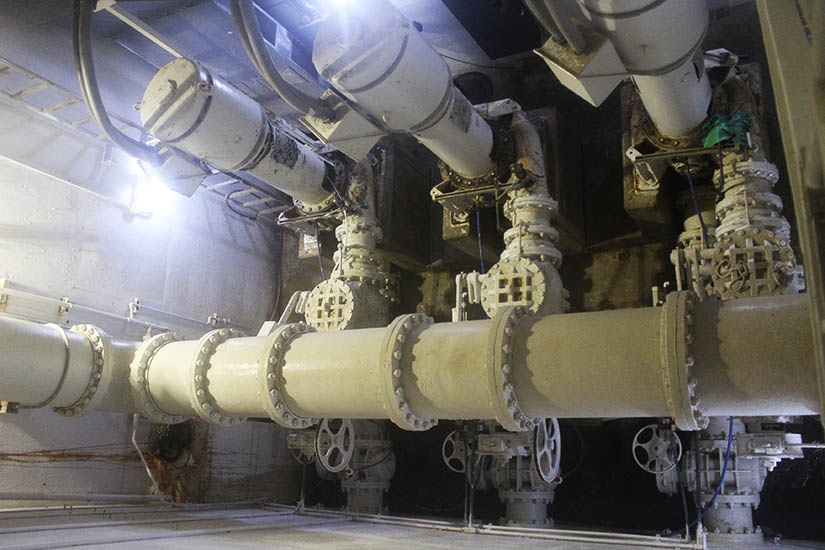
Director Hughes said the sewer runs continuously, so if they have a problem with one of the pumps, they take it offline and clean it out if it starts to get clogged with debris.
In July 2024, the three main pumps were clogging faster than they could clean them out because of the large amount of debris that was coming in at one time. He said they took one pump offline and by the time they unclogged it, they had to pull the next one offline. Even with all of the staff, the pumps were clogging faster than they could clean them and all three of the pumps were disabled with clogs for about an hour.
He said when the pumps are completely clogged, it takes about six hours to pull the motor, unwire it, unbolt it, lift it up and remove the debris and six hours to put it back together. It took about 36 hours to clear them and by that time they were knee deep in sewage. The underground space was hot and humid — and noisy.
He said the sewer was still flowing and the levels kept building, which caused the overflow to occur at the lowest point for the system. This resulted in 41,418 gallons of untreated wastewater overflowing into Trappers Trail and into a stormwater drain that led to Renny’s Creek — a tributary of the Neuse River.
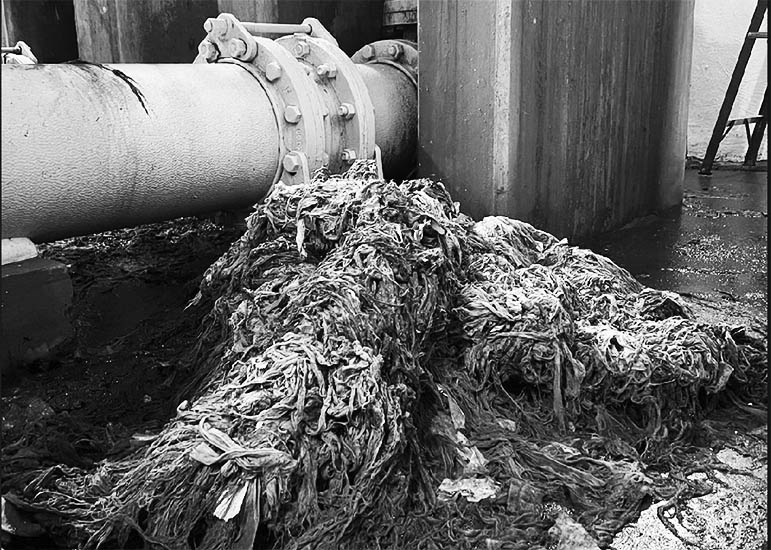
The following week, they were back rebuilding replacements for the pumps.
He said the team does a “very good job every day, but the volume (of disposable wipes) that we’ve been getting over the last three to four years has been tremendous.”
He said the plant was designed to handle standard toilet paper and a lot of debris. It passes through a screen and the screen automatically removes it. The problem is, some of it is clogging the system before it ever gets to the screens that are designed to remove it.
He said they try to educate the public and they have big banner wrapped on the side of trucks that says, “Save our Pipes, Do not flush wipes.”
He said about ten years ago companies started to market disposable wipes as flushable, but they really weren’t.
He said there were a couple of lawsuits by the wastewater industry and the companies had to change the marketing label. The packaging has a “do not flush” logo on it.
He said people got used to flushing the wipes, so they keep doing it.
When COVID hit, the disposable wipes problem went from a manageable problem to a “Uh oh, this is a huge problem.” It has become a major issue for the wastewater industry.
Jordan Hughes said people can help by stop putting wipes in the toilet. The major problem with the wipes is the fibers get shredded, interlocked and are mixed with fat, oil and grease. They get too big to handle and it never gets to the first step in the removal process. It has to be manually removed, which is a labor-intensive process.
“While some wipes may be labeled as ‘disposable,’ that does NOT mean they are flushable. In fact, most wipes — even those marked as ‘flushable’ — do not break down like toilet paper and can cause serious problems in the sewer system,” he said.
“At our treatment plant, we regularly deal with clogged pumps, blocked pipes, and damage to equipment caused by wipes, even the ones labeled as flushable and disposable. These issues can lead to costly repairs, sewage overflows, and environmental harm — all of which are paid for by the citizens of our community.”
He said the toilet is the biggest drain in the house and it boggles the mind what’s being flushed. They get a lot of mini shampoo bottles, lighters, washcloths, shoes, cell phones, feminine hygiene products, condoms, socks, bed sheets, flip flops, kid’s toys, straws, all types of food wrappers and other items.
“If people don’t put it in, we wouldn’t have to pull it out,” he said.
“The best advice is it to always remember the 3-P rule: Only flush the 3 P’s — Pee, Poop, and (Toilet) Paper. All other items, including wipes, should go in the trash — even if the packaging says ‘flushable’ or ‘disposable,’” he said.
He said they have a very good and dedicated team. He said senior employees have retired recently and “it isn’t easy or pretty work and trying to get people to do it is a challenge.”
He said it takes 20 people to run the main wastewater water treatment plant, bio-solids operations, lab, small WWTP in James City and a tree farm.
How it works
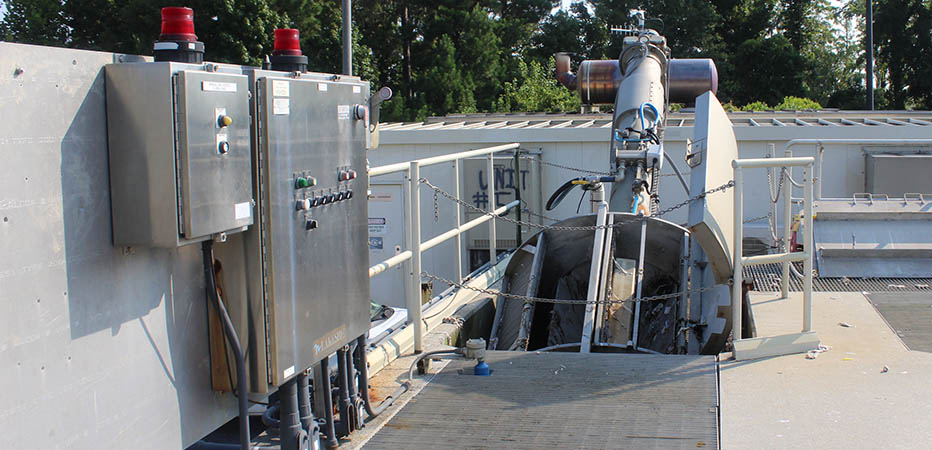
Hughes said the primary treatment process is the first step where they remove debris through a screen and grit chamber, then it’s hauled away to the landfill.
He said the second step (secondary treatment) is a biological treatment process, which is highly regulated.
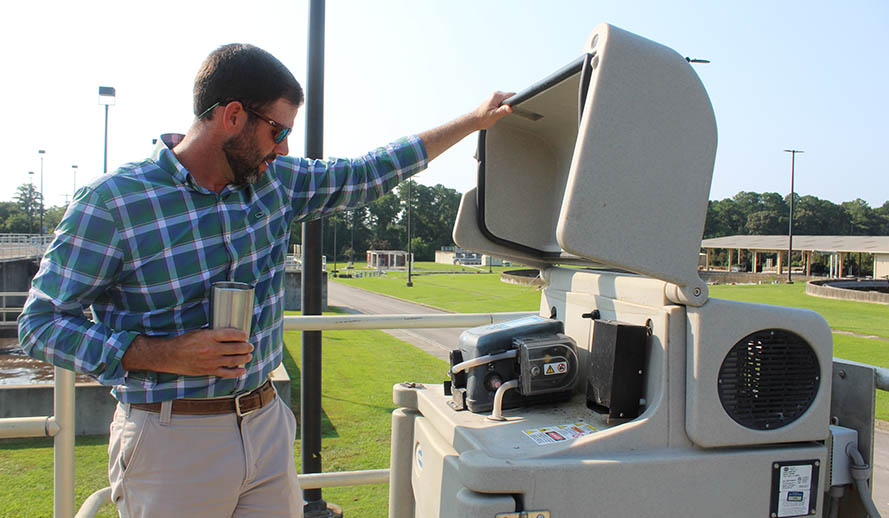
He said they have two identical biological treatment units that are mirrored and do the same thing. This allows them to take a unit offline for maintenance or repairs without disrupting operations.
He said The BTU contains denitrifying microorganisms that break down organic matter in the wastewater and provide the mechanisms for nutrient removal.
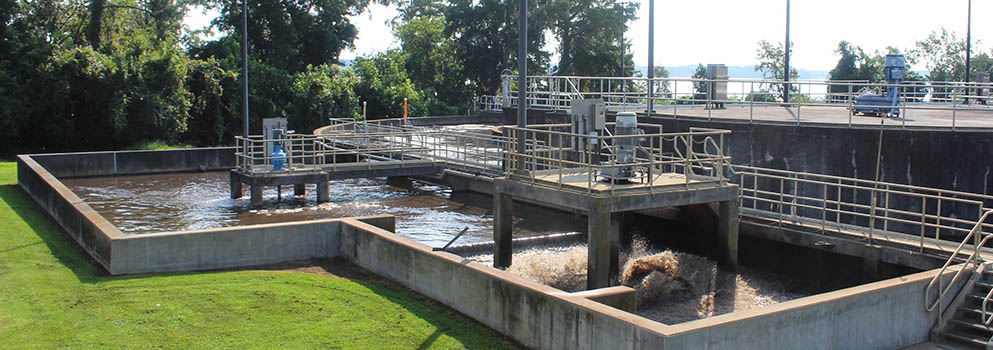
Liquid separates from solids.
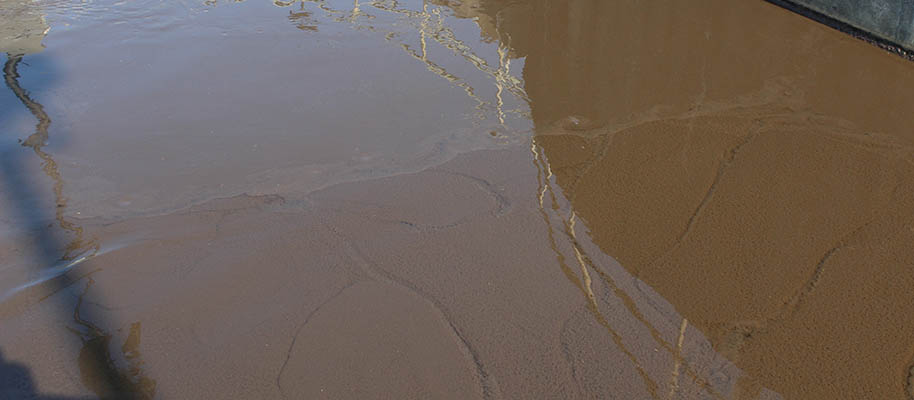
The water goes into clarifiers where the solids are allowed to settle from the water. The solids that settle out are pumped back to the start of the plant and it continues the process.

For the final step (tertiary treatment) process involves the water going through a deep bed filter where any final solids are removed. The clear effluent then it gets disinfected with chlorine.
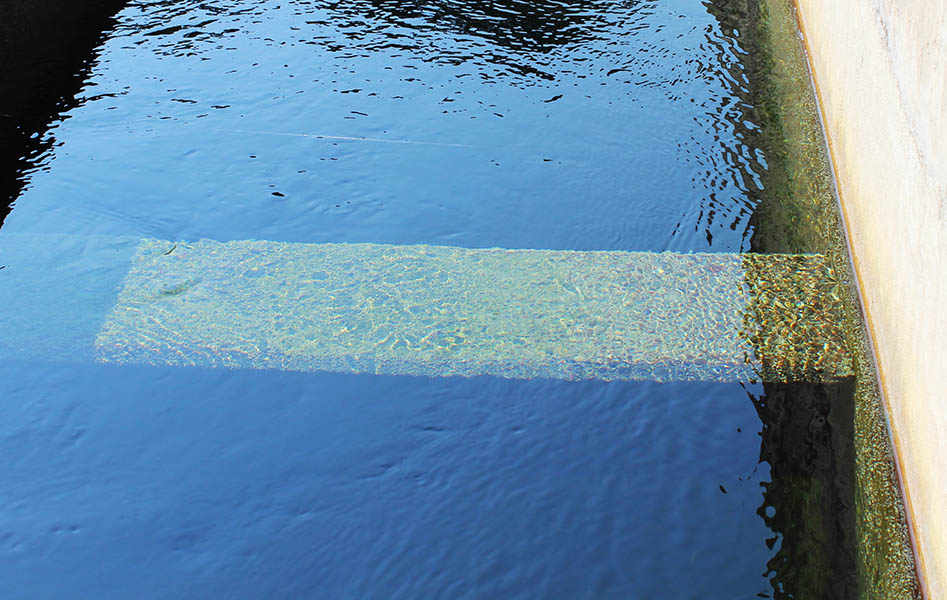
Sodium bisulfite is added to counteract the chlorine and aerated before being discharged to the Neuse River.
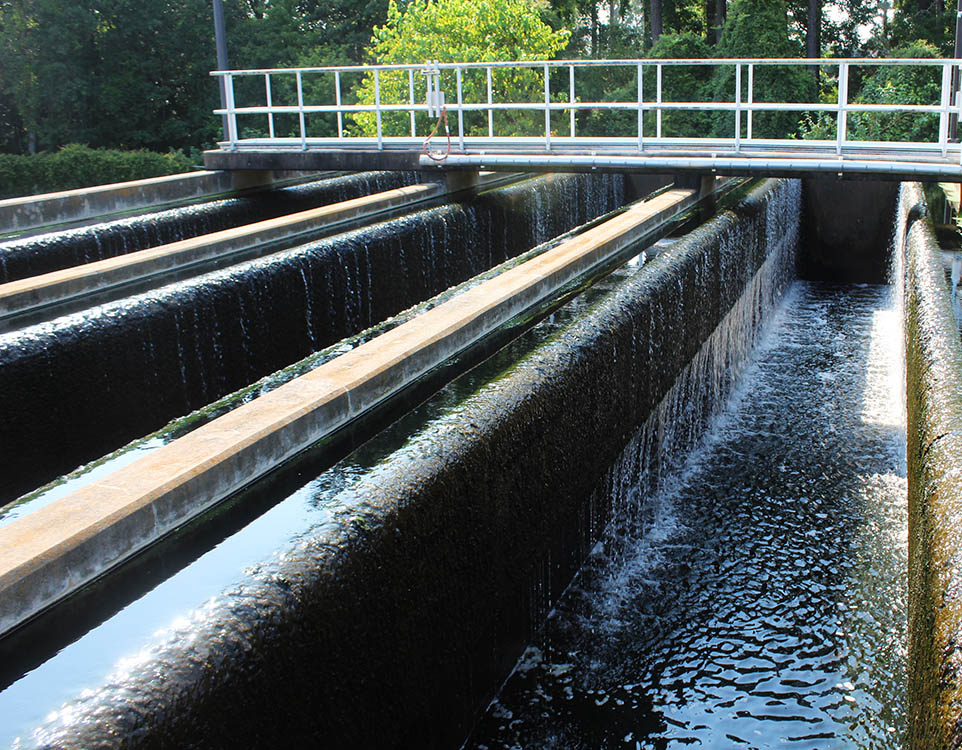
The water is discharged into the Neuse River ten months out of the year. The rest of the time it’s pumped into the northern lake at Martin Marietta Park. A nearby sod farm also contracts with the city to reuse the water.
Bio-Solid process

Director Hughes said the sludge goes through a belt press to squeeze the water out of it. Then it goes through a drying process by adding agricultural lime to it and running it through a heater, which ends up as a Class A Bio-Solid.
He said local farmers pick it up in the spring and fall before planting and use it for soil stabilization. The rest of the time the landfill uses it to close cells and other purposes.
He said there are potential changes coming with regulations that they may see by the end of the decade which may stop allowing land application of the biosolids.
He said they don’t have an indication of per- and polyfluoroalkyl substances, known as PFAS and forever chemicals, in their water wells. The problem is PFAS substances are in everything else like shampoo bottles, Teflon and other things. People are sending PFAS to the wastewater plant through the sewer system, even though the chemicals are not found in New Bern’s domestic water supply.
He said New Bern is not currently required by any permit conditions to conduct PFAS testing of the City’s wastewater, but he thought there would be measurable levels by what is coming into the New Bern WWTP through consumers.
He said at other locations in the United States they have found that PFAS are showing up in places like private farm wells, which has been linked to the disposal of land applied bio-solids in those areas.
He said in those situations there was no reason why the PFAS should be here, there were no PFAS producers in those areas and they found out the bio-solids from the wastewater treatment plant were land applied to the agricultural fields in these areas and that’s how the chemicals were getting into the water.
He said in order to remove PFAS from biosolids it would have to be incinerated, another wastewater treatment plant would need to be built, or it would have to be sent to a lined landfill. He said if that became a regulation, they would have to send it to a lined landfill, and it would be a higher cost.
Wastewater Treatment Plant Lab
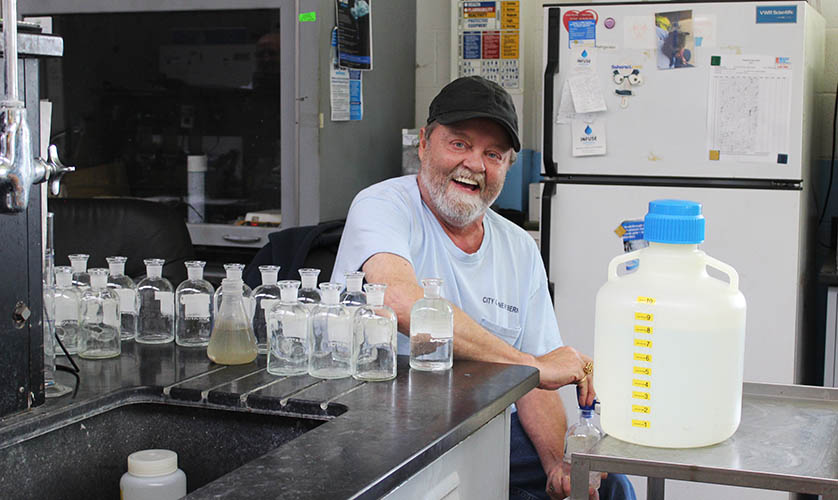
The tour ended at the plant’s lab where Dwayne Greer was testing the water. He said they take dirty water and turn it into good water.
“What we’re putting into the river today is much cleaner than what’s been in there in the past,” Jordan Hughes said.
He said what they are doing today is a huge difference from what they were doing prior to the 1960’s, when the wastewater went right into the river.
The original WWTP was constructed in 1964 to comply with the requirements of the Clean Water Act when it became law.
He said the city is a member of the Lower Neuse River Basin Association that manages how much nitrogen they put into the river between New Bern and Raleigh. They also manage their wastewater permits as a group.
He said hundreds of millions of dollars in improvements have been made to LNRBA wastewater plants over the last 20 years in an effort to reduce the amount of nitrogen that’s being put into the Neuse River.
He said the river is a pretty stable environment and there are days, weeks are months when stormwater runoff causes higher levels of nitrogen in the river.
Hughes said it’s a nonstop process and they don’t take off for holidays or hurricanes.
He said the city has been in the wastewater business since the late 1800s, so we’ve got a lot of old infrastructure, and it takes a lot to work on it from time to time. But we’ve got a good team, and they know the mission and they do a pretty good job with it.”
Small Wastewater Treatment Plant in James City
The City of New Bern also has a small wastewater treatment plant in James City that handles sewer from that area. He said the water is reused on a 188-acre tree farm off Crump Farm Road.
The View
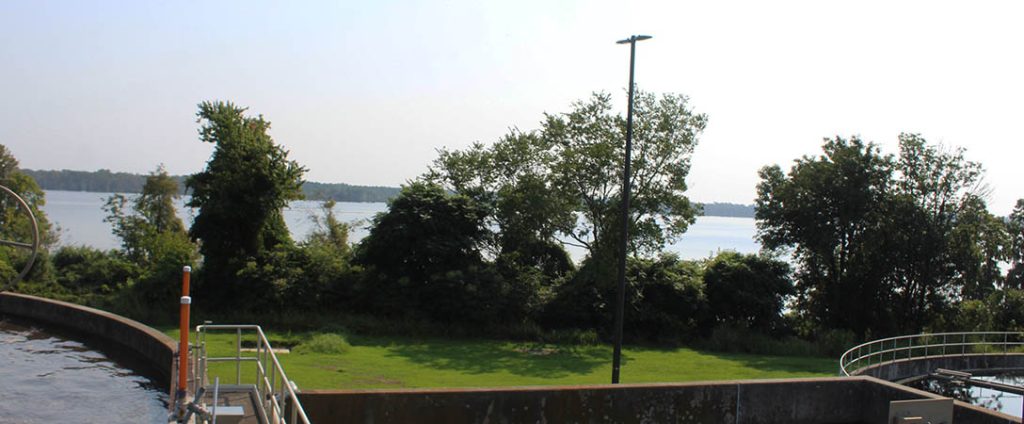
Jordan Hughes said, “Out of all of the city’s facilities, we have the best view in New Bern.”
Editor’s note: This story was updated to include additional details about disposable wipes.
By Wendy Card, Editor. Send an email with questions or comments.

